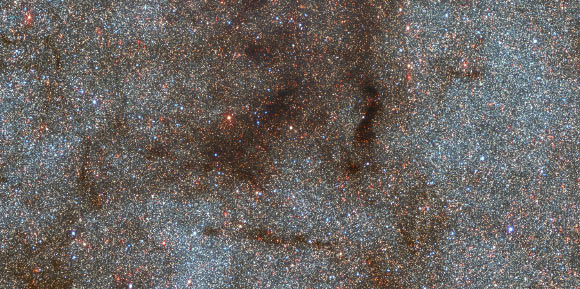Most stars in the central 1,000 light-years of the Milky Way’s hub formed when it was swollen with infalling gas more than 10 billion years ago, according to astronomers from the Blanco DECam Bulge Survey.
Source: Sci News
“Many other spiral galaxies look like the Milky Way and have similar bulges,” said co-lead author Dr. Christian Johnson, an astronomer at the Space Telescope Science Institute.
“So if we can understand how the Milky Way formed its bulge then we’ll have a good idea for how the other galaxies did too.”
“The Blanco DECam Bulge Survey gives us a big picture view of the bulge in a way that many previous surveys have not been able to do,” said co-author Dr. Caty Pilachowski, an astronomer at Indiana University.
Using the Dark Energy Camera (DECam) on the Victor M. Blanco 4-m telescope at the Cerro Tololo Inter-American Observatory, the researchers surveyed a portion of the sky covering more than 200 square degrees.
They collected more than 450,000 individual photographs that allowed them to accurately determine chemical compositions for millions of stars. For the study, they analyzed data for a subsample of 70,000 stars.
They used the measured brightness of stars at different wavelengths of light, particularly in the ultraviolet, to determine their metal content.
Stars forming at different times would be expected to have different metallicities on average.
Instead, the team found that stars within 1,000 light-years of the Galactic center showed a distribution of metals clustered around a single average.
This suggests that those stars formed in a brief firestorm of star birth.
“Our survey is unique because we were able to scan a continuous section of the bulge at wavelengths of light from ultraviolet to visible to near-infrared,” Dr. Johnson said.
“That allows us to get a clear understanding of what the various components of the bulge are and how they fit together.”
The results appear in two papers in the Monthly Notices of the Royal Astronomical Society.
Source: Sci News

































Leave a Comment
You must be logged in to post a comment.